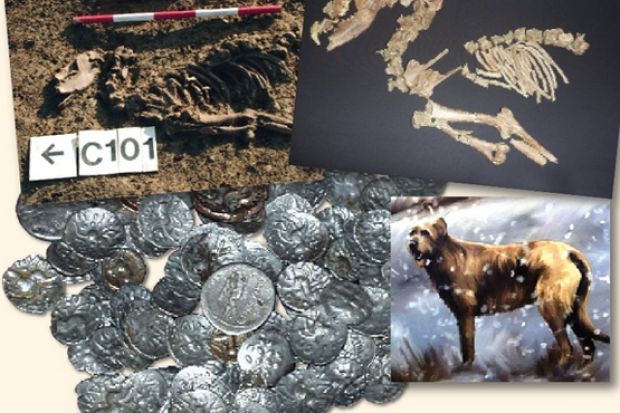The Hallaton Treasure - a collection that includes more than 5,000 Iron Age and Roman coins, a Roman cavalry parade helmet and other mysterious silver objects - was discovered 11 years ago and can now be seen in the Harborough Museum in Leicestershire.
Buried on the same site were the bones of three large dogs, which are believed to have been used to guard the shrine and its contents in the first century AD.
Until recently, these bones were held at the University of Leicester, where they were studied and pieced together by specialists in archaeological services.
It now seems likely that the dog on display was bound and sacrificed by members of the local Corieltavi tribe, perhaps when it got too old to carry out its guard duties.
Its remains can now be seen at the entrance to the museum's Hallaton Treasure Gallery, imitating the location of the dog's burial at the shrine.
Send suggestions for this series on the treasures, oddities and curiosities owned by universities across the world to: matthew.reisz@tsleducation.com.
Register to continue
Why register?
- Registration is free and only takes a moment
- Once registered, you can read 3 articles a month
- Sign up for our newsletter
Subscribe
Or subscribe for unlimited access to:
- Unlimited access to news, views, insights & reviews
- Digital editions
- Digital access to THE’s university and college rankings analysis
Already registered or a current subscriber? Login
